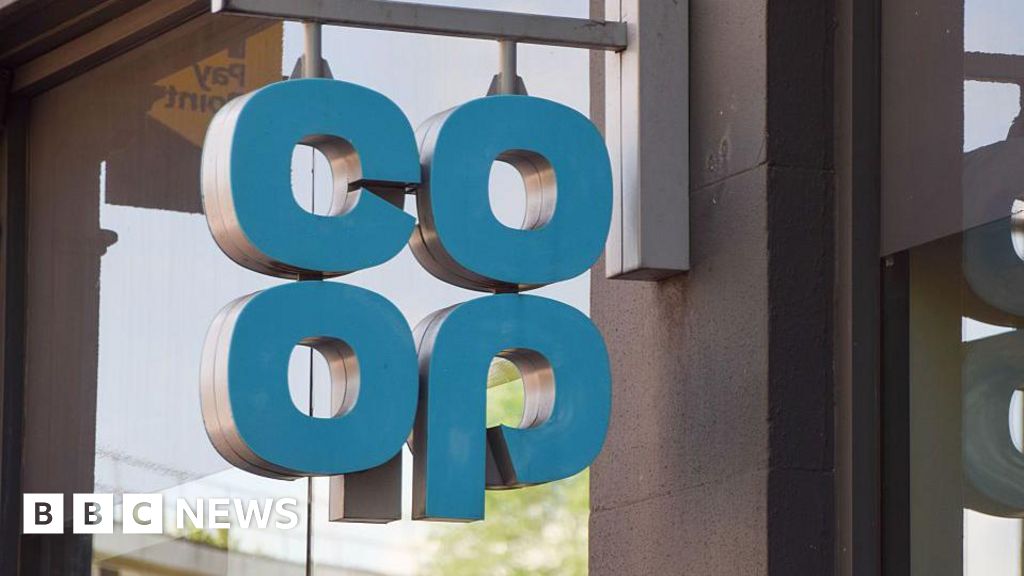ARTICLE AD BOX
By Nikhil Inamdar
BBC Business Correspondent, Mumbai
Image source, Getty Images
Image caption,The Life Insurance Corporation is nearly as old as independent India
Shares in the Indian state-run insurance giant Life Insurance Corporation (LIC) have gone on sale in a $2.75bn (£2.18bn) initial public offering, witnessing strong demand from institutional investors.
The government is offering a 3.5% stake in what will be India's largest share sale, despite both the size and valuation of the issue being slashed significantly to reflect current market conditions.
What are the details of the IPO?
The date for share listing is 17 May, the government's Department of Investment and Public Asset Management said.
Bids for anchor investors opened on 2 May but the share sale for the public opens on 4 May and closes on 9 May.
General investors can buy equity shares at a price band set at $11.75-12.36 (£9.38-9.87) per share.
The company's policyholders, employees as well as small mom and pop investors will be entitled to an additional discount of up to 60 rupees, according to papers filed by the company with India's securities watchdog.
Broking firm Zerodha expects at least 8-12 million additional online trading accounts to be opened by investors keen to apply for the IPO, a 10-15% bump up to the 80 million accounts currently in operation.
Why does LIC matter?
LIC is nearly as old as independent India. Formed by nationalising and merging 245 private insurance companies, it started issuing policies in 1956, holding a monopoly on India's insurance sector until the turn of the millennium.
More than two decades after private competition was allowed, LIC continues to hold a leadership position, with 66% market share as of 2021.
Its sheer size makes the insurance behemoth a systemically important company for India.
At over $500bn, its asset base is bigger than the GDP of several countries. And with nearly 280 million policies in force, it manages four times more policies than the entire population of the UK.
It is also India's largest asset manager, with massive investments in state and central securities as well as the stock market.
According to the ratings agency CRISIL, LIC's equity investments in listed companies represented 4% of the total market capitalisation of the National Stock Exchange. It has also been the default financier of the government in trying times, bailing out flailing state-run companies.
LIC also owns a sprawling portfolio of real estate across India.
Why is LIC a part of India's social fabric?
With 1.3 million distributors selling policies across pretty much every nook and corner in India, the ubiquitous "LIC agent" has held a unique place in independent India's public consciousness.
Srinivasalu Naidu, a septuagenarian who has sold policies door to door for the past 30 years, told the BBC he was known in his heyday as "LIC Naidu", a much revered figure in his village in the southern Indian state of Andhra Pradesh.
Agents like him have been critical to the company's growth and mission to build trust and create a savings culture across the remote corners of the country.
"People didn't buy policies from me just as insurance, they did it as an investment. For their kids' education or wedding. They trusted their life savings with me," said Naidu.
Image source, Getty Images
Image caption,With nearly 280 million policies in force, LIC manages four times more policies than the entire population of the UK
Private banking giant UBS estimates 10 out of every 100 rupees saved by Indian households go into LIC, a much larger amount than even the deposits attracted by India's largest bank, the State Bank of India.
Are there any concerns over the IPO?
Given LIC's social relevance and scaled-down valuation, India's opposition politicians have accused the government of selling "family silverware" and prioritising shareholders over politicians.
According to analysts, even at the upper price band, LIC's issue has been valued far lower by the government than its three listed private peers - HDFC Life Insurance Co., SBI Life Insurance Co. and ICICI Prudential Life Insurance Co.
"It is not justified at all. You should also involve the opposition (in deliberations), when you are disinvesting something like the LIC which is a social security net," Dr Shama Mohamed, a spokesperson of the Congress party, told the BBC.
Last month, PM Narendra Modi's government decided to defer the mega IPO amid global stock market volatility due to the Russian invasion of Ukraine. It had initially planned to raise about $8b by selling 5% of LIC to fund its widening fiscal deficit - the gap between earnings and expenditure.
Amid surging fuel costs and lower growth projections, the pruned fundraising target is expected to put additional pressure on New Delhi's already stretched finances.
But analysts say the size and price are appropriate given the current environment, with foreign investors pulling out nearly $20bn from Indian equities since October 2021. And the government is confident that LIC's dominant leadership position and fair valuation will attract significant investor interest.
"Even if we have a bit of a constrained environment, we can still pull it off because that's the kind of optimum demand scenario which exists," Tuhin Kanta Pandey, secretary at the Department of Investment and Public Asset Management, told journalists in Mumbai last week.
What does the IPO mean for LIC?
In the long run, a stock market listing is expected to improve how the firm is run and bring in more transparency.
But at a time when its competitors have all gone digital, LIC's overt dependence on physical distributors has been flagged as a cause of concern by analysts, who believe it will continue losing market share in the years ahead.
"On the margin front, it will be kind of hard for LIC to compete if it sticks to the distributor model. They will have to re-innovate the company and become relevant for what the insurance market will be tomorrow," says Nikhil Kamath, co-founder of Zerodha.
According to economic commentator Vivek Kaul, LIC pays agents twice as much in commissions in the first year, compared to private insurers, which is not sustainable in the longer run.
Covid-19 has also had an impact on the company. Its growth in new business premiums declined significantly as lockdowns disrupted operations, reiterating the need for LIC to significantly leverage technology to drive operating efficiency.
But analysts expect India's young population and massive under-penetration of life insurance to give LIC a long runway for expansion.
According to analysis from the broking firm Anand Rathi, India's protection gap - or the difference between the insurance required and actually available - was 83% or US$16.5 trillion in 2019, the highest in Asia-Pacific, "thereby presenting a huge potential for growth".
You may also be interested in:
Insuring India: A business with huge potential

 3 years ago
49
3 years ago
49








 English (US) ·
English (US) ·